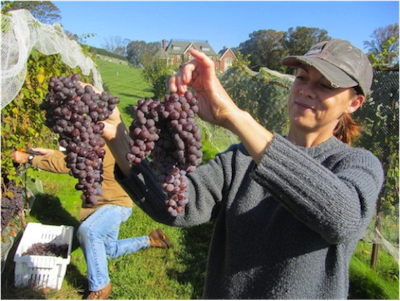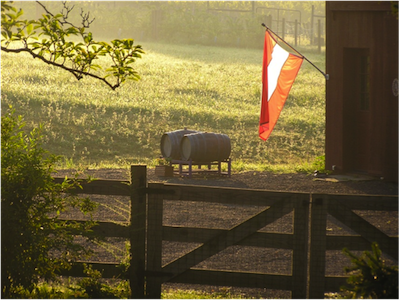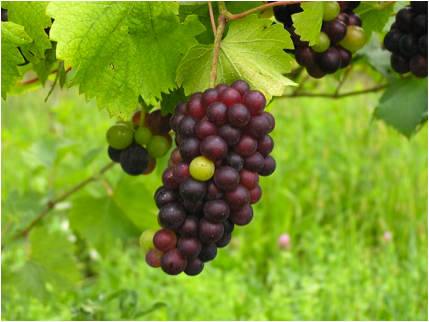Is it possible we’re starting our ninth year? Apparently so; we planted those first vines in April 2005, when our youngest, Matthias, was only two months old, and now have thousands.
If we’ve learned anything, it’s that we can no more predict the future than undo the past, and that each year’s ups or downs matter less than their average over time. 2012 was no different.
Last March it reached 80F in the vineyard, more than a month early, prompting dreams of a record-long growing season yielding the ripest of grapes. But killing frosts in April nipped our early-budding vines, reducing yields and egos, lowering the bar nearer to “normal”, whatever that is. We added another high-quality grower to our portfolio of vineyard sites, produced a record 1,000 cases of wine, and had an overnight guest in October named Sandy, whose presence is still felt today.
Our children remember last year as the second consecutive time Halloween was cancelled and that we “camped out in the house”, living without electricity for two weeks. How cool is that?
Well, I recall other things.
- The unmistakable smell of sea air outside our home the night of October 29, when Sandy roared toward us, as if we were at the Shore instead of 60 miles inland;
- Kissing my children goodnight as they lay on cots in the kitchen, with ancient hand-hewn timbers vibrating and creaking around us, all to avoid bedrooms within reach of large trees;
- Sitting by a window on the “safe” side of the house, after everyone was asleep, in awe of Sandy’s rising power, hoping the carpenters who built this humble farmhouse knew what the hell they were doing. I really wasn’t sure it would matter, if they did.
The most enduring memory, though, is of those dozen volunteers who appeared at dawn two days before Sandy arrived. With just-fermented wine still outdoors on the Crush Pad and the entire vineyard in harm’s way, these guardian angels completed two weeks of work in 18 hours:
- Bottling over 100 cases of wine to free-up barrel space;
- Pressing 2,000 liters of new wine, then racking it into barrels indoors;
- Travelling 4 ½ hours round-trip to buy a new stainless steel tank; and
- Removing, rolling and storing 4 miles of bird netting from the vineyard trellises.
As a result of this Herculean response, we lost not one trellis post, wire, vine or drop of wine. Thank you, all.
The year ahead?
Pruning is almost done, so we’ll be ready if buds burst early in March or April again. We have a larger team now, trained and already proven. And we begin the season knowing that our vine choices, vineyard and cellar methods are translating into wines that favorably impress critics who have no vested interest in our success. That last part is big.
But as one friend remarked when The Wall Street Journal story ran, “Well, Peter, now that you’ve proved it’s possible, the pressure’s really on to repeat it every single year.” Indeed, it is.

 Since 2005
Since 2005

